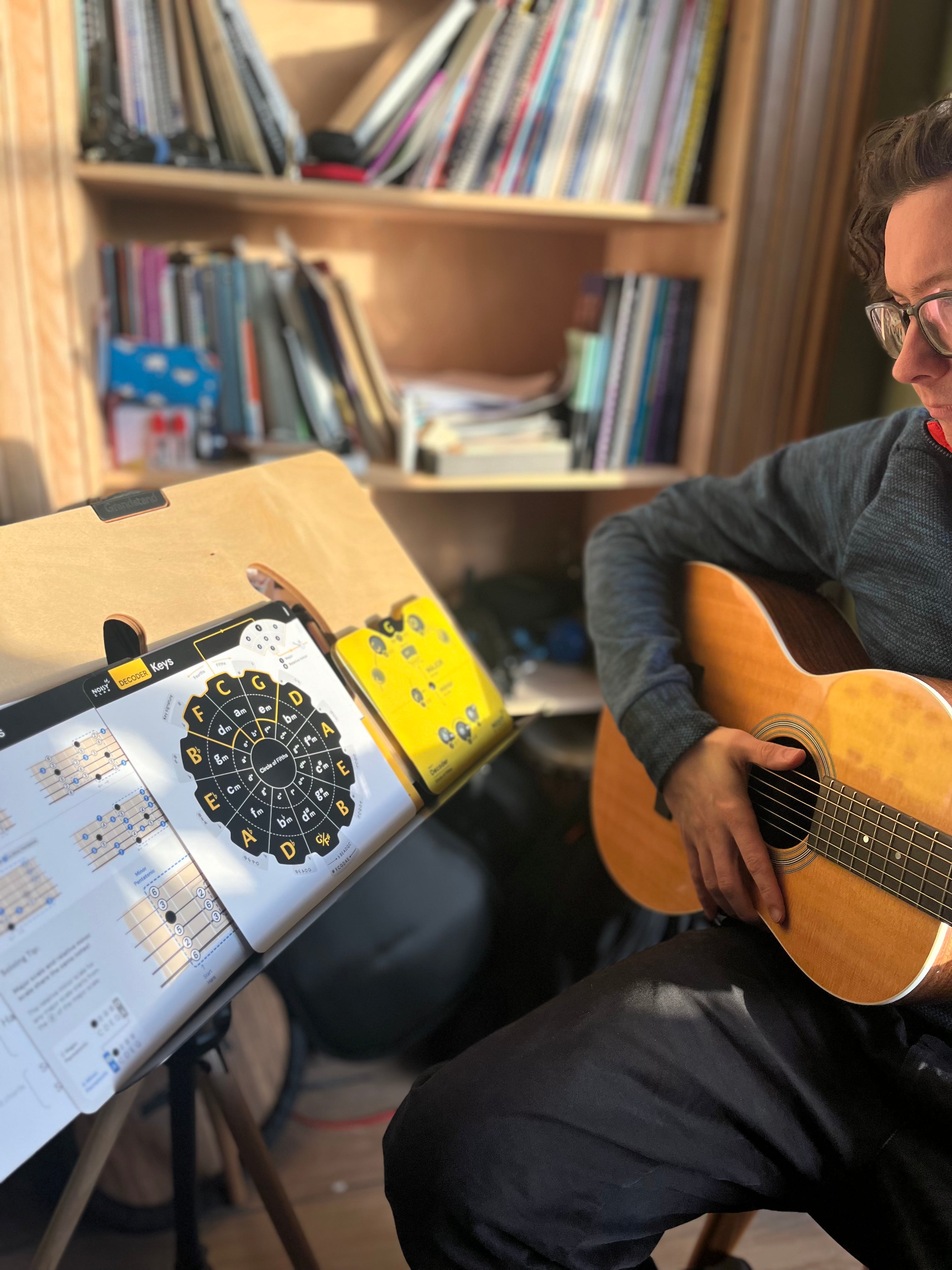Welcome to your next blog installment of our Cheat Sheets for Guitar. Let's talk about all things keys.
One of the greatest cheat sheets in music theory is the circle of Fifths. Our Keys cheat sheet organises all possible musical keys (there are 12!) into a handy circle. A key is a family of notes and chords that work with the tonic (or root) of the key. Each key has a unique set of seven notes and chords that form the framework for melodies and harmonies. The brilliance of the circle of fifths is that it doesn’t organise the circle alphabetically. The circle isn’t arranged A, A#, B, C etc. The circle of fifths arranges the keys by closeness starting at the top with the key of C, which is the only key that contains natural notes.
Navigation:
The keys are separated by an interval of a fifth (hence the circle of fifths!). This means that for example, G is a fifth away from C. In the opposite direction, the interval between keys is a fourth.
The two keys closest to C are F and G. The key of G shares all the same notes except the F#. The key of F shares all the same notes as C except the Bb. These note changes are captured in the grey tabs around the circle which show the key signature differences for each key. As you rotate the circle clockwise, one sharp is added to each key. If you rotate the circle counter-clockwise, a flat is added with each key. Making the pitch of each key a perfect fourth higher than the previous key.
For each key, the top three yellow are your major chords, the next row down shows your minor chords, and the bottom row shows your diminished chord.
Application:
Acquiring the ability to recognise the key of a song is crucial for effortlessly navigating through chords and scales. This skill becomes invaluable when collaborating with fellow musicians or when undertaking the task of transposing songs into different keys.
-
Transposition:
Transposing a piece of music involves changing the key while maintaining its overall structure. The circle of fifths is immensely useful for this task. Musicians can simply move around the circle to find a new key, understanding the required sharps or flats and their positions. This is essential for accommodating different instruments or vocal ranges or adapting a piece to suit a particular performer's preference.
-
Scale Building:
The circle of fifths is a helpful tool for constructing scales. The major scale is the starting point for understanding every other type of scale. As a guitarist, scales are extremely useful because they form the foundation for your riffs, solos and melodies.
-
Key Signatures:
As mentioned above, the circle of fifths clearly displays the key signatures for each key. By examining the number of sharps or flats in a composition, musicians can quickly identify the key in which it is written. This is particularly helpful for performers, as it allows them to prepare for the specific scales and key-related elements they'll encounter in a piece.
-
Composition / Chord Progressions:
The circle of fifths provides valuable insights into chord progressions within a given key. Musicians often refer to the primary chords in a key as the I, IV, and V chords. For example, in the key of C major, these chords would be C major (I), F major (IV), and G major (V). Understanding these relationships aids in composing and improvising chord progressions that sound harmonically pleasing. Because let’s face it, you could throw any chords together, but the reality is, if they aren't harmonically cohesive, it might not sound too good …
For a more in depth explanation of the circle of fifths for guitar check out this blog post.
The other-side of the cheat sheet (for those who have the physical version) shows you where each key appears on the fretboard. It’s pretty cool to not just be able to understand the keys and chords within the circle of fifths, but also physically understand their location on the fretboard.
Check out our digital decoder, if you haven't done so already to get to grips with how keys actually work in cohesion with each other. The Decoder cleverly only shows you the relevant information for each key you are focusing on.








